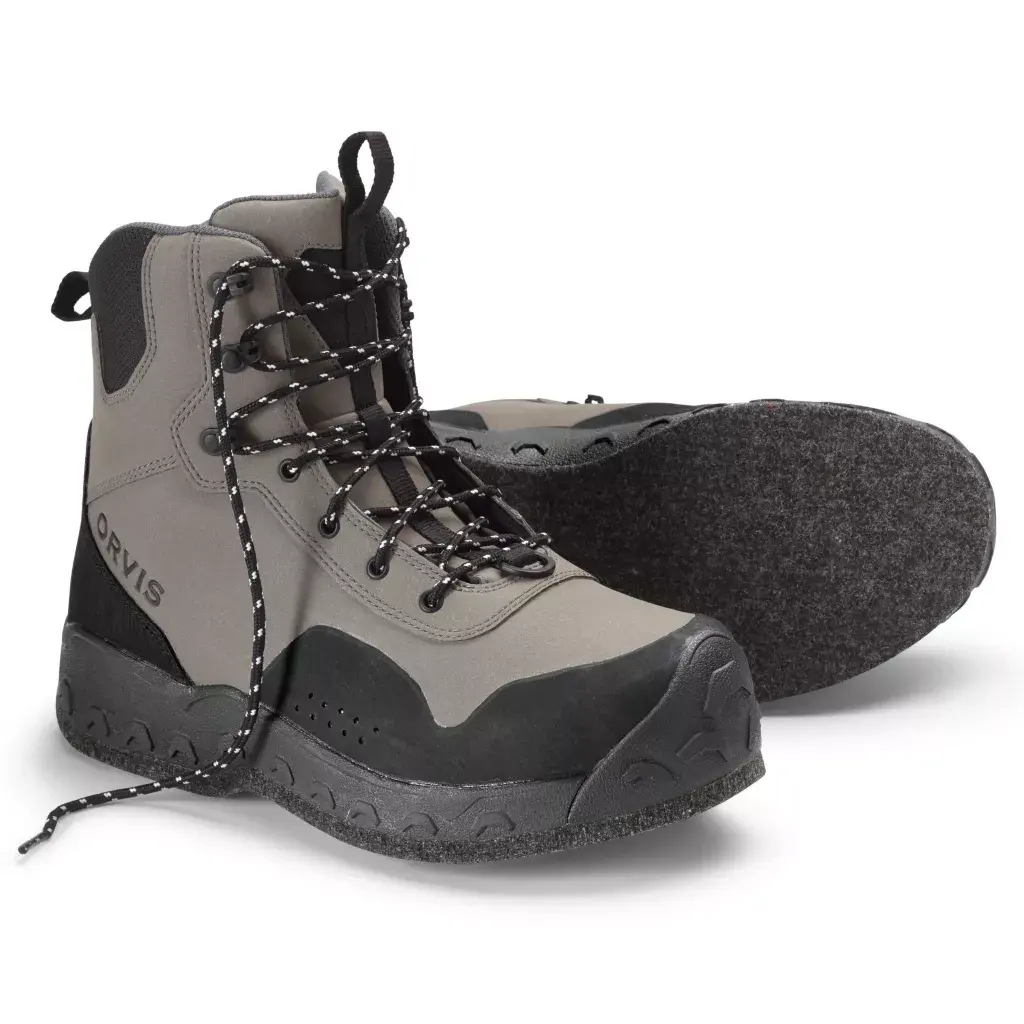Why Choosing the Right Fly Fishing Boots Matters
Selecting the right footwear is essential for every angler, and Fly fishing boots play a critical role in ensuring comfort, safety, and performance on the water. A good pair of boots can provide stability on slippery riverbeds, protect your feet from sharp rocks and debris, and keep you comfortable during long hours of fishing. Not all boots are created equal, so understanding the key features that distinguish quality boots from average options is crucial for every fly fishing enthusiast.
Material and Durability
One of the first factors to consider when choosing fly fishing boots is the material. Most high-quality fly fishing boots are made from waterproof leather, synthetic fabrics, or a combination of both. Leather provides excellent durability and molds to your feet over time, offering a personalized fit. Synthetic options tend to be lighter, quicker to dry, and resistant to wear and tear, making them ideal for anglers who frequently wade in water. Durability is paramount because your boots will be exposed to water, mud, and abrasive surfaces regularly, so investing in a pair that can withstand these conditions is a must.
Comfort and Fit
Comfort is non-negotiable when it comes to fly fishing boots. Ill-fitting boots can cause blisters, foot fatigue, and discomfort, which can ruin your fishing experience. Look for boots with padded insoles, supportive arches, and adjustable closures that ensure a snug but not tight fit. Trying on boots at the end of the day, when your feet are slightly swollen, can help you select a size that accommodates natural foot expansion during extended wading sessions.
Traction and Sole Technology
Another critical feature is the sole design. Good fly fishing boots must provide excellent traction on slippery rocks, mud, and uneven riverbeds. Felt soles have long been a favorite among anglers for their superior grip, but rubber-soled boots with studs or vibram soles are becoming increasingly popular due to their durability and ability to maintain traction in a variety of conditions. Some boots even offer interchangeable soles, allowing anglers to switch between felt and rubber depending on the fishing environment.
Waterproofing and Breathability
Waterproofing is a key factor for any pair of fly fishing boots. Boots that fail to keep your feet dry can lead to discomfort, cold feet, and even potential health risks over time. Look for boots with reliable waterproof membranes such as Gore-Tex, which allow water to stay out while letting moisture from sweat escape. Breathability is equally important because it prevents overheating and keeps your feet comfortable during long hours of fishing. Balancing waterproofing with breathability ensures your feet remain dry, comfortable, and healthy.
Weight and Mobility
Weight can make a significant difference in your overall fishing experience. Lightweight fly fishing boots reduce fatigue during long hikes to remote fishing spots and make wading in rivers more manageable. However, lighter boots should still offer adequate support and protection. The ideal boot strikes a balance between lightweight design and structural integrity, allowing for natural movement without compromising safety.
Ankle Support and Stability
Ankle support is another feature that should not be overlooked when purchasing fly fishing boots. Boots with reinforced ankle collars or higher-cut designs help prevent sprains and injuries while navigating uneven terrain. Stability is particularly important when crossing rivers or standing in swift currents. Boots that offer excellent support will keep you secure and allow for confident movement, enhancing both safety and performance.
Maintenance and Longevity
Caring for your fly fishing boots properly can extend their life and maintain performance. Rinsing off mud and debris after each trip, drying them thoroughly, and occasionally conditioning leather boots are simple steps that protect your investment. Choosing boots that are easy to clean and maintain ensures that you can enjoy many seasons of fishing without compromising comfort or functionality.
Style and Additional Features
While functionality is paramount, many anglers also consider style and extra features. Some fly fishing boots come with integrated gaiters to keep debris out, quick-lacing systems for convenience, or thermal insulation for cold-weather fishing. These additional features can enhance your fishing experience, but they should complement, not replace, the core attributes of comfort, durability, and traction.
In conclusion, selecting the right fly fishing boots requires careful consideration of material, fit, traction, waterproofing, weight, and support. Investing in quality boots ensures that you stay comfortable, protected, and agile while enjoying your time on the water. By focusing on these essential features, you can find the perfect pair of boots to elevate your fly fishing experience and make every outing safer and more enjoyable. Choosing wisely today means many successful fishing adventures tomorrow.
